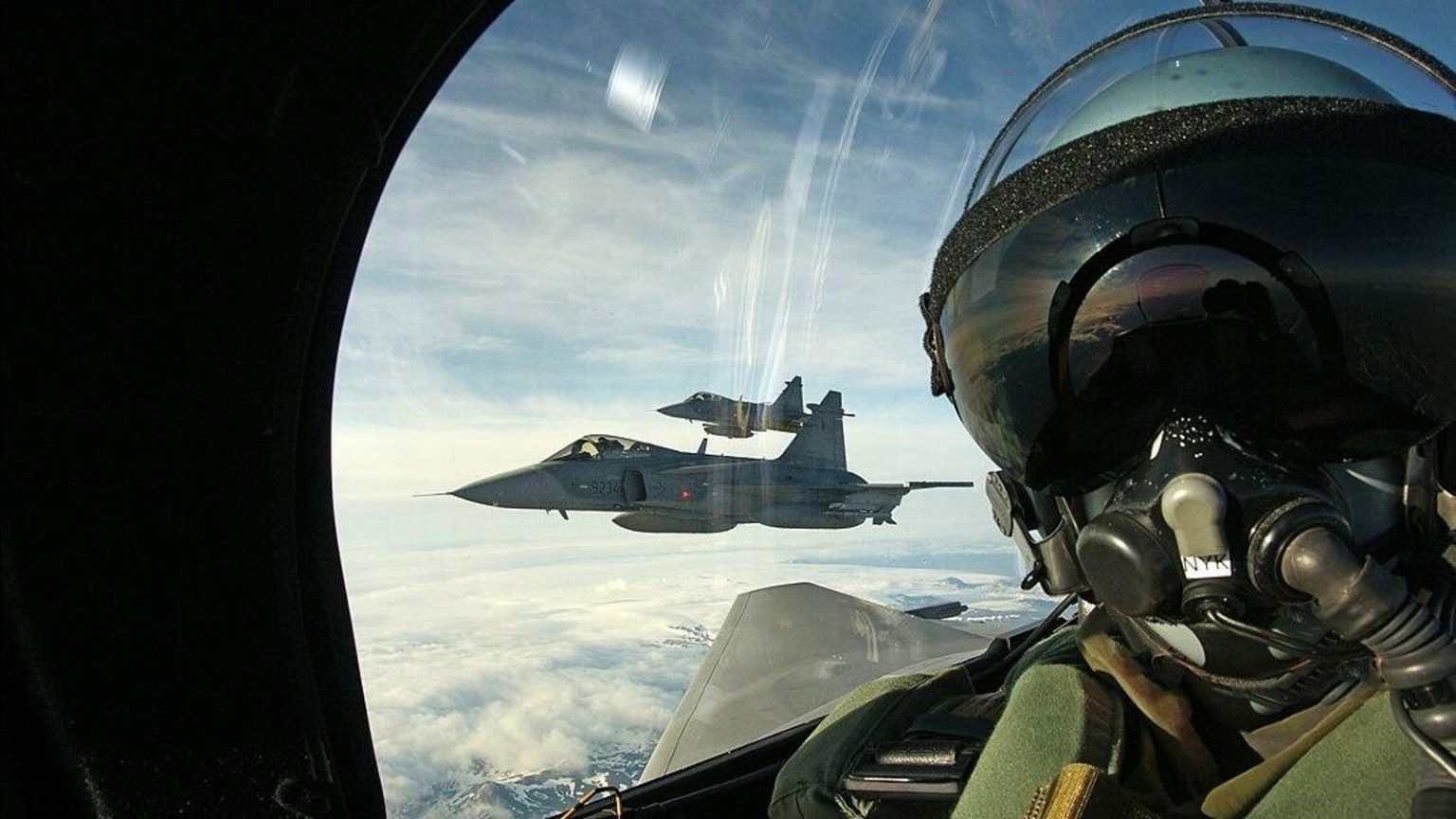It’s obvious what the Ukrainian air force might do with its 85 ex-European Lockheed Martin F-16s once the nimble supersonic fighter jets begin arriving in Ukraine in the coming weeks.
The air force could try to intercept the Russian air force Sukhoi fighter-bombers that lob as many as 3,000 satellite-guided glide bombs at Ukrainian troops and civilians. The KAB glide bombs are a “miracle weapon” for the Russians, Ukrainian Deep State noted. And for now, the Ukrainians have “practically no countermeasures.”
A Sukhoi Su-34 flying high and fast can toss a glide bomb 25 miles—or even 40 miles in the case of newer, longer-ranged KABs. That’s far enough that Ukraine’s existing air defenses—ex-Soviet fighters and missile batteries on the ground—can’t always shoot back.
But the Ukrainian F-16 pilots will have their work cut out for them, analyst Justin Bronk explained in a new study for the Royal United Services Institute in London. “The glide bomb sorties will be very challenging to intercept regularly,” Bronk wrote.
The main problem is Russia’s ground-based air defenses, which make it extremely dangerous for Ukrainian warplanes to fly at high altitude practically anywhere in Ukraine—but especially within a hundred miles or so of the front line, well within reach of Russia’s S-400 surface-to-air missile batteries.
While it’s possible Ukraine is acquiring 100-mile-range AIM-120D air-to-air missiles for its F-16s, seemingly allowing Ukrainian pilots to shoot at Russian glide bombers from the edge of the Russian air-defense coverage—in practice the AIM-120s will fall short of their full range.
“When close to the front lines, Ukrainian pilots will have to fly them at very low altitudes to avoid being detected and shot down by layered Russian [air defenses],” Bronk wrote.
“At such low altitudes, the missiles start out in dense air with a lot of aerodynamic drag and must climb against gravity to reach the altitudes where their targets are,” Bronk added. “As a result, by the time their rocket motors burn out after the first few seconds of flight, they have not gained nearly as much speed or altitude as if they were launched from a fighter flying in the thin air at high altitudes and at supersonic speeds.”
Fired from low altitude, an AIM-120 loses potentially tens of miles off its range, possibly placing the Russian glide bombers out of reach—unless Ukrainian pilots can somehow fly deep inside Russian-controlled territory and survive long enough to shoot their missiles.
As Bronk pointed out, one possible solution to this problem is a longer-ranged air-to-air missile such as the European Meteor, which flies as far as 125 miles under optimal conditions. But the Meteor is incompatible with the F-16—and also incompatible with the Mirage 2000-5 fighters France has pledged to Ukraine.
But the only fighter type Ukraine might get that also can carry the Meteor is the Swedish JAS-39 Gripen. Stockholm has expressed its willingness to donate surplus Gripens to Ukraine—but also agreed to pause any transfer until the Ukrainians have finally received their first consignments of F-16s.
Ukraine’s allies are apparently worried about overwhelming the Ukrainian air force with too much new equipment, too fast.
So if Bronk’s assessment is correct, it could be a while—a year or more—before Ukraine has a fighter-missile combination that can shoot down Russia’s glide bombers without also exposing Ukrainian pilots to extreme risk.
That helps to explain the emphasis Ukraine has placed on striking Russia’s Sukhois and their KAB stockpiles while they’re on the ground.
Earlier this month, Ukraine’s long-range strike drones struck the Sukhoi base at Morosovsk, in Russia 150 miles from the front line, possibly damaging or destroying several fighter-bombers. It was just the latest in a series of drone and rocket strikes that have inflicted mounting damage on Russian air bases and the jets they shelter.
Expect more drone raids, even as F-16s begin arriving in Ukraine. “For now, attacks on Russian air bases are Ukraine’s best way to limit the damage that the [Russian air force] can do to its forces on the front lines,” Bronk wrote.
Sources:
1. Deep State: https://t.me/DeepStateUA/19104
2. Royal United Services Institute: https://www.rusi.org/explore-our-research/publications/commentary/damaged-su-57-emphasises-vulnerability-russian-airbases-near-ukraine
3. Reuters: https://www.reuters.com/world/europe/sweden-halts-plan-gripen-jets-ukraine-news-agency-tt-reports-2024-05-28/
4. The War Zone: https://www.twz.com/air/ukraine-strikes-blow-to-russian-su-34-fullback-base
Read the full article here





